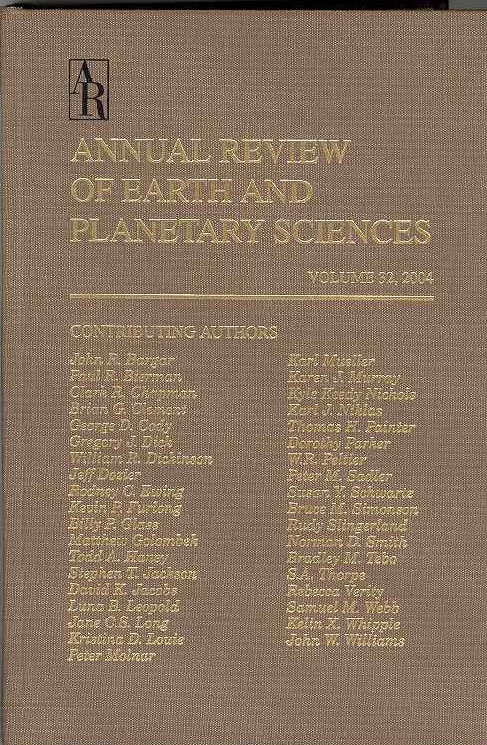Submarine Volcanic Eruptions and Their Impacts on Hydrothermal Systems and Biological Communities
IF 13
1区 地球科学
Q1 ASTRONOMY & ASTROPHYSICS
Annual Review of Earth and Planetary Sciences
Pub Date : 2025-05-30
DOI:10.1146/annurev-earth-040522-095654
引用次数: 0
Abstract
More than 70% of Earth's magmatic output occurs in the ocean. This volcanism shapes major features of the seafloor, directly impacts the chemical composition of the oceans through water/rock interactions, and drives hydrothermal circulation of seawater. The formation of seafloor mineral deposits and chemosynthetic habitats that encircle the globe along mid-ocean ridges, volcanic arcs, and hotspots is driven by volcanism. The style, magnitude, depth, and frequency of seafloor eruptions create a wide range of physical, chemical, and biological impacts on the seafloor. Research and exploration over the past 30 years have revealed some of the diversity of seafloor eruptions and their impact on the undersea environment.海底火山喷发及其对热液系统和生物群落的影响
地球上70%以上的岩浆都来自海洋。这种火山活动塑造了海底的主要特征,通过水/岩石的相互作用直接影响海洋的化学成分,并推动了海水的热液循环。海底矿藏和化学合成栖息地的形成沿着大洋中脊、火山弧和热点环绕地球,是由火山活动驱动的。海底喷发的形式、强度、深度和频率对海底产生了广泛的物理、化学和生物影响。过去30年的研究和探索揭示了海底喷发的一些多样性及其对海底环境的影响。■海底喷发是地球上最常见的火山活动,同时也是最少被观测到的火山活动。▪喷口深度的静水压力调节爆炸性喷发与喷涌性喷发以及喷发行为的形式。▪海底喷发对海洋生物群落和流入海洋的化学物质有重大影响。▪动物群对火山爆发事件的恢复能力也是多变的,恢复动态可能缓慢,群落需要多年或数十年的时间进行改革。
本文章由计算机程序翻译,如有差异,请以英文原文为准。
求助全文
约1分钟内获得全文
求助全文
来源期刊

Annual Review of Earth and Planetary Sciences
地学天文-地球科学综合
CiteScore
25.10
自引率
0.00%
发文量
25
期刊介绍:
Since its establishment in 1973, the Annual Review of Earth and Planetary Sciences has been dedicated to providing comprehensive coverage of advancements in the field. This esteemed publication examines various aspects of earth and planetary sciences, encompassing climate, environment, geological hazards, planet formation, and the evolution of life. To ensure wider accessibility, the latest volume of the journal has transitioned from a gated model to open access through the Subscribe to Open program by Annual Reviews. Consequently, all articles published in this volume are now available under the Creative Commons Attribution (CC BY) license.
 求助内容:
求助内容: 应助结果提醒方式:
应助结果提醒方式:


